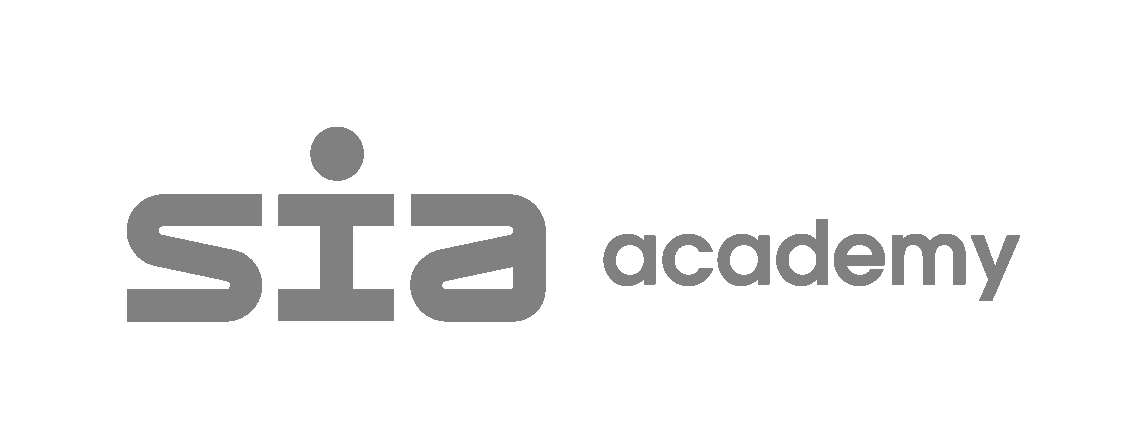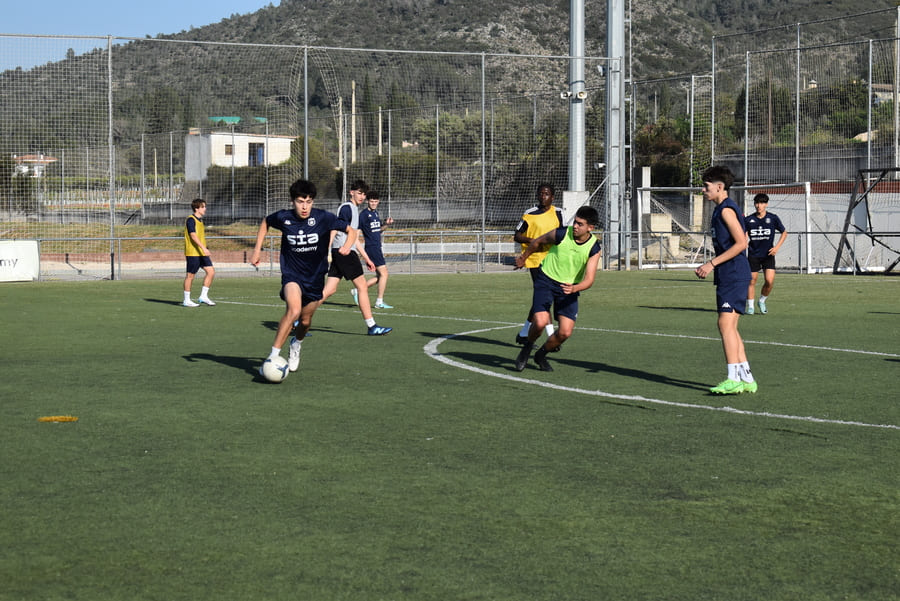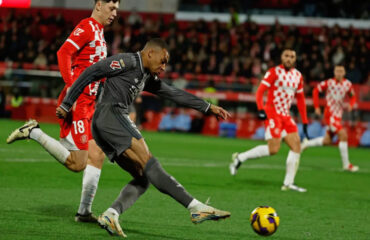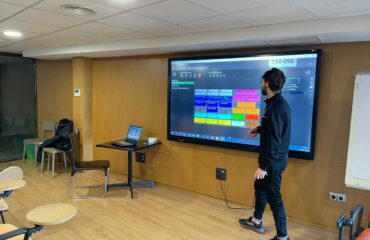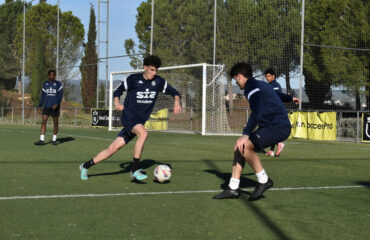In modern football, mastering both legs is an advantage that separates great players from good ones. Being able to control, pass or shoot with the weaker foot broadens the technical and tactical possibilities of any footballer. SIA Academy, with its philosophy of comprehensive training, works specifically on this aspect with its young talents.
José Luis, coach at the academy, sums it up like this: “A player who can handle both legs multiplies his value on the pitch, because he is less predictable and more complete”. With that premise in mind, we review a top 7 of essential techniques to improve the weaker leg and gain confidence in the game.
Table of contents
Oriented control with the weak leg
The first step to improving the weaker leg is learning to control the ball while naturally directing it. It’s not just about stopping the ball, but about guiding it toward the area where the action is intended to start.
At SIA Academy, coaches insist that players perform rondos or possession drills forcing themselves to always control with the weak foot. In this way, the footballer develops confidence in real pressure situations and begins to lose the fear of using that leg.
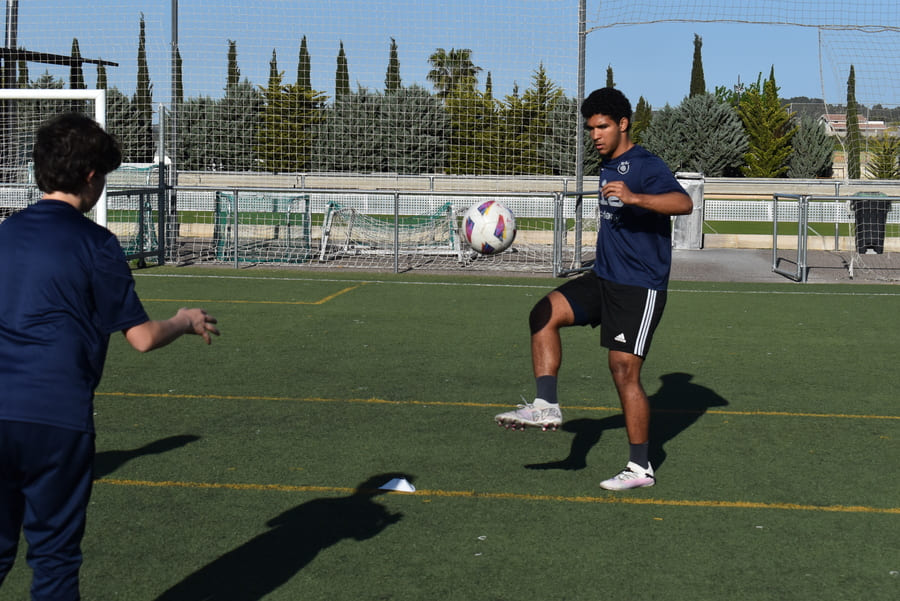
Short passes and switches of play
Mastering short passes with the weaker foot is essential to give fluidity to the game. From there, the difficulty can be increased with long balls and switches of play.
Constant wall-pass training in small spaces forces the weak foot to be used automatically. Repetition is key, since with each pass precision improves and muscle memory is acquired. At the academy, these exercises are combined with long switches so that players understand that the weaker leg can also be a valid resource to open up the pitch.
Shooting at goal
Nothing builds confidence like scoring goals with the weaker leg. That is why SIA Academy dedicates specific sessions to having its players finish from different positions using only that foot.
Shots with the inside, volleys or medium-range strikes are all part of the repertoire. The goal is not initial power, but rather accuracy and confidence. When a player begins to see that he can also score with that foot, his mindset changes radically.
Dribbling in tight spaces
Dribbling is another area where the weak leg must gain prominence. A good exercise is to perform slalom runs between cones or poles using only that foot. At first it may feel uncomfortable, but with practice coordination improves. At SIA Academy, players are encouraged to work in small spaces, where control and quick turns force the use of both legs. This way, a more versatile dribbling ability is developed, one that is harder for opponents to anticipate.
Crosses and aerial balls
One of the most noticeable differences between professional and amateur footballers is the ability to cross with both legs. Being able to deliver an accurate ball from either wing multiplies attacking options.
At the academy, players practice crosses at different heights and trajectories, both low and high. This type of training increases security and the sense that the weaker leg can also become a weapon, especially for wingers and full-backs.
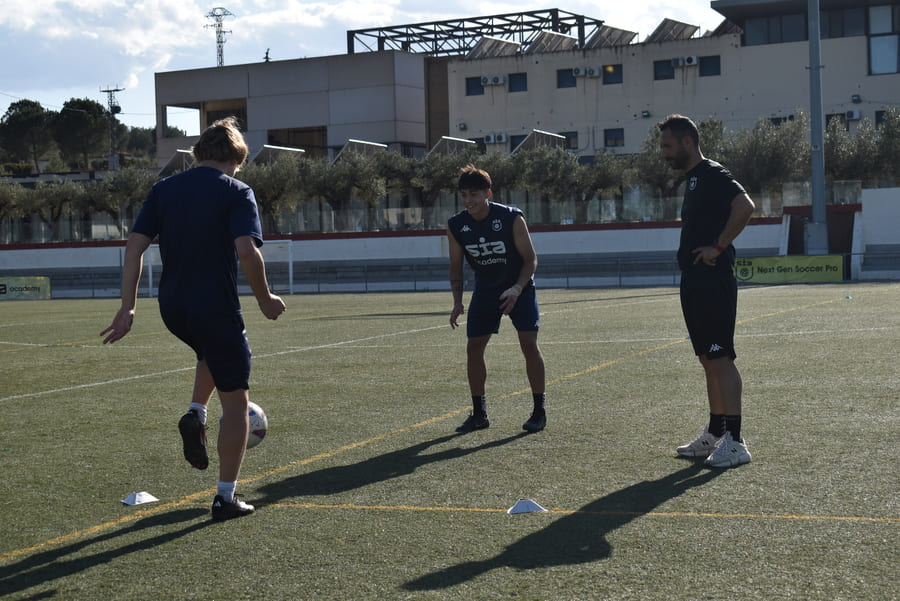
Coordination and strength drills
It’s not all about the ball. Motor coordination and specific strength also influence the improvement of the weak leg. Jumps, unilateral supports or resistance band work help to balance both limbs.
According to José Luis: “If the player has physical confidence in his weaker leg, he loses the fear of using it in pressure moments”. In this regard, physical preparation is fundamental so that the weaker foot stops being a secondary resource and becomes a natural part of the technical repertoire.
Application in real game situations
The final step is transferring everything learned into a competitive context. It’s not enough to train alone, players must be forced to use their weaker leg in small-sided games, internal tournaments or realistic possession drills.
At SIA Academy, dynamics are designed where, for example, a goal scored with the weak foot counts double. These rules encourage players to take risks and, in doing so, turn insecurity into confidence.
Improving the weaker leg is not a one-day task, but a progressive process that requires consistency and patience. Oriented control, passing, shooting, dribbling, crossing, physical work and application in real situations form a complete path toward ambidexterity.
The example of academies like SIA Academy shows that modern training is not focused solely on natural talent, but also on the ability to work on the less dominant aspects. By strengthening the weak leg, players gain security, creativity and efficiency, essential qualities in elite football.
José Luis himself sums it up clearly: “When a footballer trusts both legs, he becomes a freer, more unpredictable and more useful player for his team”.
That, ultimately, is the goal: to develop complete players who are not afraid to use any resource on the pitch. Because in football, as in life, true growth comes when you work on what is most difficult.

